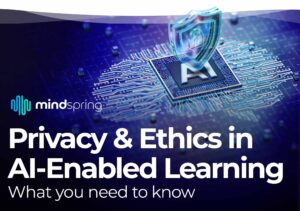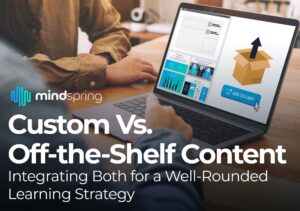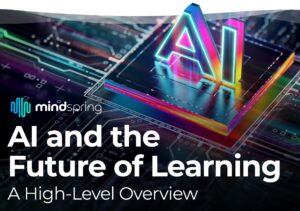Corporate L&D has reached a critical point: in a survey of 200 Learning & Development leaders in global organizations, half revealed that their learning architectures were “decades” out-of-date. In the same survey, two fifths of the respondents reported losing talent because they were not being developed enough. Organizations desperately need a better system. Fortunately, digital learning has decisively charged to the forefront, but what does it mean, and more specifically, what does it mean for corporate learning? Let’s unpack the case for digital learning.
Overview
So what is digital learning? While it sounds like a mode of delivery, like eLearning or microlearning, digital learning is actually an umbrella term that describes a learning ecosystem that these modes are part of–namely, one that uses technology to enhance the learning experience.
The move into digital learning is an exciting one because it speaks to the realities of how people learn. Digital connectivity is part of our everyday lives, but so is person-to-person interaction and experience. Digital learning acknowledges and utilizes this flexibility to create unique, engaging learning experiences for everybody, using modes like blended learning, social learning, eLearning, Youtube videos, podcasts, and more.
Suited for Adult Learning
One of the biggest reasons that digital learning is making waves, not just in the instructional design world but also in corporate spheres, is because it is so well suited for adult learners. Lifelong learning has been elevated from a buzzword to a basic requirement for young professionals, who are now seeking positions that offer ongoing learning opportunities. This requirement brings the improvement of corporate learning front and center when it comes to a company’s survival, much less success. And when it comes to lifelong learning, digital learning is a natural fit.
Look, as adults, we all know what it’s like. We’re busy, with a million responsibilities competing for attention at any given time. Not only that, but we’ve got enough life experience to judge whether or not something is worth our time, and if it’s not, to reallocate attention somewhere else. So those compliance trainings that we’ve all tuned out at some point? You can see why that particular style of corporate learning is less than successful in today’s world.
Digital learning is practical, and it’s designed to help the learner achieve real results that they can apply immediately in their lives. It can be collaborative or personal, extensive or specific. In short, it gives adults the flexibility and autonomy to actually care about what they’re learning.
The Role of eLearning
In the past few decades, as digital technologies have rapidly become more common and accessible, there have been several terms in instructional design that, at a glance, look to mean exactly the same thing. (Computer learning, online learning, eLearning, virtual learning, digital learning… the list goes on.) While some of these are just different names for the same concept, eLearning deserves a revisit, especially in the context of digital learning.
Here’s the thing: when eLearning is done poorly, it’s usually done really, really poorly. Modules that amount to little more than a textbook with UX design can be frustrating to learners, and rightfully so. But a well-designed eLearning course not only fits seamlessly into a digital learning ecosystem, it actually forms the foundation of it. Three characteristics demonstrate why:
- Systemic: A well-designed, customized eLearning module allows organizations to track learner progress, even with the understanding that a large portion of someone’s learning experience may take place outside of the module. Competency-based models allow learners to test out of lessons they already understand, with multiple points of entry and personalized depth of coverage for topics of interest.
- Standardized: eLearning modules not only provide a great learning experience, but are also an organized way to build a body of knowledge or curriculum that is consistent with the organization’s goals, business practices, and culture. This consistency ensures that learners are on the same page about vital information, as well as company messaging and policies.
- Scalable: One of the greatest advantages of eLearning, from a business standpoint as well as a learner’s, is its incredible flexibility. Modules can be developed for both desktops and mobile devices, they can be translated into different languages, expanded, modified, updated. They can be accessed whenever the learner needs or wants to. They can be designed for a team of ten or a growing international franchise.
Digital learning is not just tomorrow’s way of learning, it’s today’s. For organizations and learners alike, the theories and strategies behind digital learning just make sense; the hard part is in the implementation. Take a look at how we can help by downloading our eBook below:









